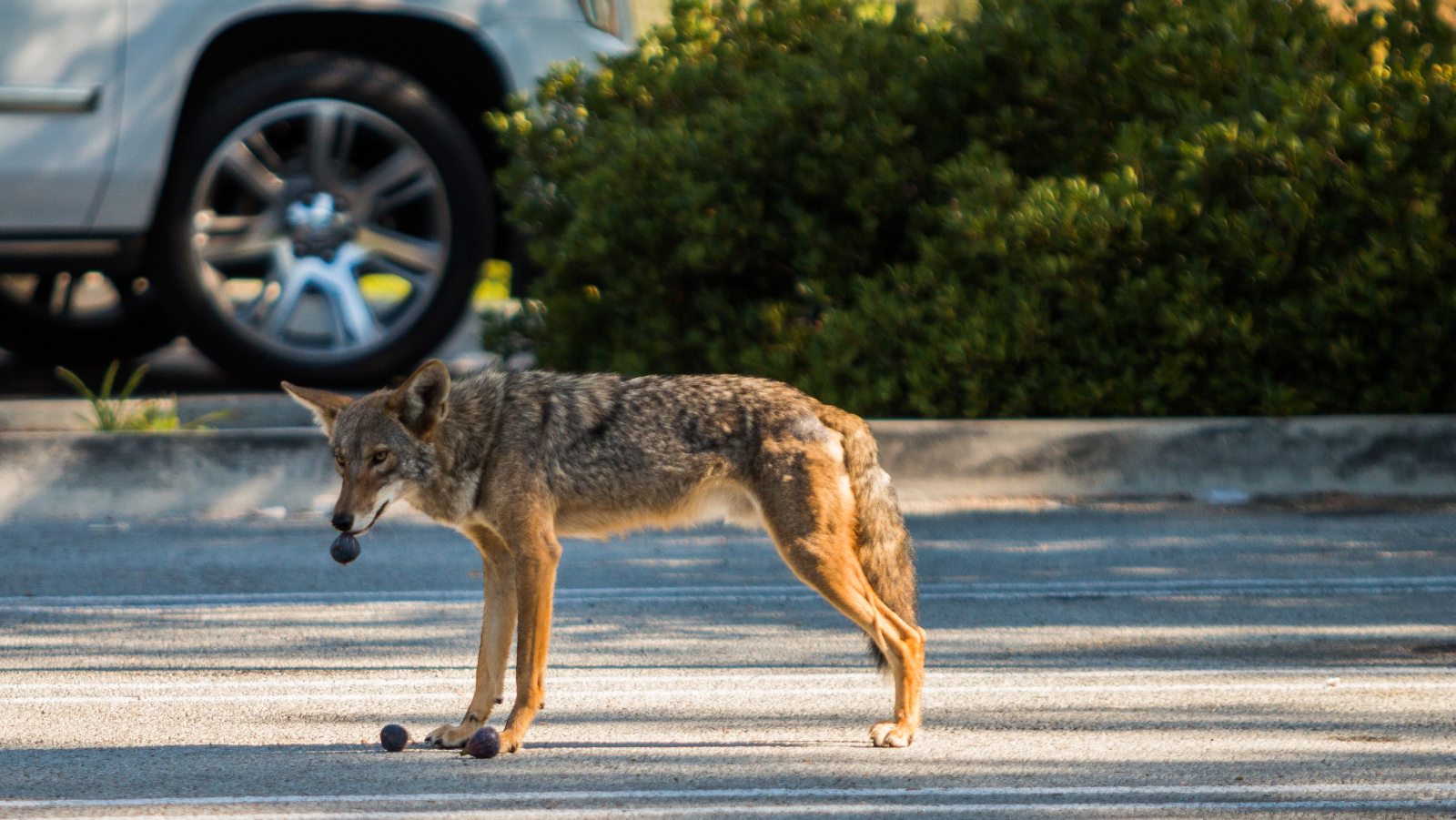Science
New Insights on Urban Coyotes: Research Reveals Hidden Dangers

Research led by Colleen Cassady St. Clair, a professor in the Faculty of Science, has unveiled significant insights into urban coyotes, highlighting both their adaptability and the potential dangers they pose. Since launching the Edmonton Urban Coyote Project in collaboration with the City of Edmonton in 2009, St. Clair has gathered vital data on coyote behaviour, particularly in residential areas.
The project began in response to an increase in coyote sightings in urban neighbourhoods. St. Clair believed that understanding their presence and behaviour could help mitigate conflicts between humans and wildlife. “Coyotes are a really interesting example of an animal that adapts well to urban living,” she stated, emphasizing the need for effective management strategies.
One innovative outcome of the project was a community-based hazing program aimed at educating residents on how to deter coyotes from approaching populated areas. This technique involves making loud noises and throwing objects to scare the animals away. St. Clair noted that for hazing to be effective, it must occur frequently enough for coyotes to associate humans with negative experiences.
To achieve this, St. Clair, along with collaborator Howard Harshaw and master’s student Gabrielle Lajeunesse, recruited 120 volunteers from 71 Edmonton neighbourhoods. These volunteers were trained to identify “bold” coyotes—those that ventured into residential areas during the day and allowed humans to approach within 40 metres. Equipped with sand-weighted tennis balls and distance-measuring cards, the volunteers logged over 1,300 hours of surveillance across two field seasons.
Despite their efforts, volunteers reported only 175 coyote sightings, suggesting that close encounters are rarer than commonly believed. Furthermore, only 23 coyotes met the conditions for hazing during the program. In many cases, simply holding up the distance-measuring card was enough to encourage coyotes to leave the area.
The findings underscore a critical point: seeing a coyote in close proximity during the day is uncommon, and when it does happen, intimidation techniques can effectively disperse the animals. Volunteers expressed a newfound sense of empowerment through the program, with one participant from Rossdale sharing how her fear of coyotes vanished after successfully employing hazing techniques during an encounter.
While many focus on preventing physical attacks, St. Clair warns of a more insidious threat: a virulent strain of tapeworm known as Echinococcus multilocularis. This parasite has been linked to 35 cases among Albertans over the past 12 years. Coyotes shed microscopic eggs in their feces, which can easily spread through wind, water, or contact with other animals. The parasite can remain asymptomatic for up to 15 years and has a fatality rate of around 95 percent if untreated.
St. Clair highlighted that approximately 65 percent of tested coyotes in Edmonton were positive for this parasite, adding a new layer to the challenges of coexisting with wildlife. “We don’t want coyotes in children’s playgrounds, community gardens, or the edges of residential yards,” she remarked. She advocates for a realistic approach to coexistence, suggesting that while complete eradication of coyotes is unlikely, it is possible to minimize their presence in areas heavily frequented by people.
Although the initial hazing study has concluded, St. Clair encourages residents to continue employing hazing techniques when encountering coyotes in residential areas. She is collaborating with the City of Edmonton on a new high-intensity hazing program aimed at addressing persistent coyote issues in specific neighbourhoods. Additionally, her PhD student Sage Raymond is investigating coyote cognition, seeking to understand how these animals overcome their natural fear of humans and venture into urban spaces in search of food.
The research not only sheds light on the adaptability of urban coyotes but also emphasizes the importance of community involvement in wildlife management. As urban areas continue to expand, understanding how to coexist safely with wildlife becomes increasingly crucial.
-

 Politics4 weeks ago
Politics4 weeks agoSecwepemc First Nation Seeks Aboriginal Title Over Kamloops Area
-

 World5 months ago
World5 months agoScientists Unearth Ancient Antarctic Ice to Unlock Climate Secrets
-

 Entertainment5 months ago
Entertainment5 months agoTrump and McCormick to Announce $70 Billion Energy Investments
-

 Science5 months ago
Science5 months agoFour Astronauts Return to Earth After International Space Station Mission
-

 Lifestyle5 months ago
Lifestyle5 months agoTransLink Launches Food Truck Program to Boost Revenue in Vancouver
-

 Technology3 months ago
Technology3 months agoApple Notes Enhances Functionality with Markdown Support in macOS 26
-

 Lifestyle3 months ago
Lifestyle3 months agoManitoba’s Burger Champion Shines Again Amid Dining Innovations
-

 Top Stories2 months ago
Top Stories2 months agoUrgent Update: Fatal Crash on Highway 99 Claims Life of Pitt Meadows Man
-

 Politics4 months ago
Politics4 months agoUkrainian Tennis Star Elina Svitolina Faces Death Threats Online
-

 Sports5 months ago
Sports5 months agoSearch Underway for Missing Hunter Amid Hokkaido Bear Emergency
-

 Politics5 months ago
Politics5 months agoCarney Engages First Nations Leaders at Development Law Summit
-

 Technology5 months ago
Technology5 months agoFrosthaven Launches Early Access on July 31, 2025





















